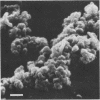Abstract
A new type of adjuvant using influenza virus as an antigen is presented. The new adjuvant was produced by polymerizing monomeric methylmethacrylate in the presence of the antigen. As a comparison, influenza virus was added to previously polymerized polymethylmethacrylate particles. In animal experiments, the antibody response in mice and guinea pigs was measured. After polymerization in the presence of the antigen, the adjuvant effect was dependent on the methylmethacrylate concentration used, reaching an optimal concentration at 0.5%. This adjuvant preparation was considerably more effective than simple addition of virus to comparable polymethacrylate preparations or to aluminum hydroxide. The latter two adjuvants were approximately equivalent in effectiveness.
Full text
PDF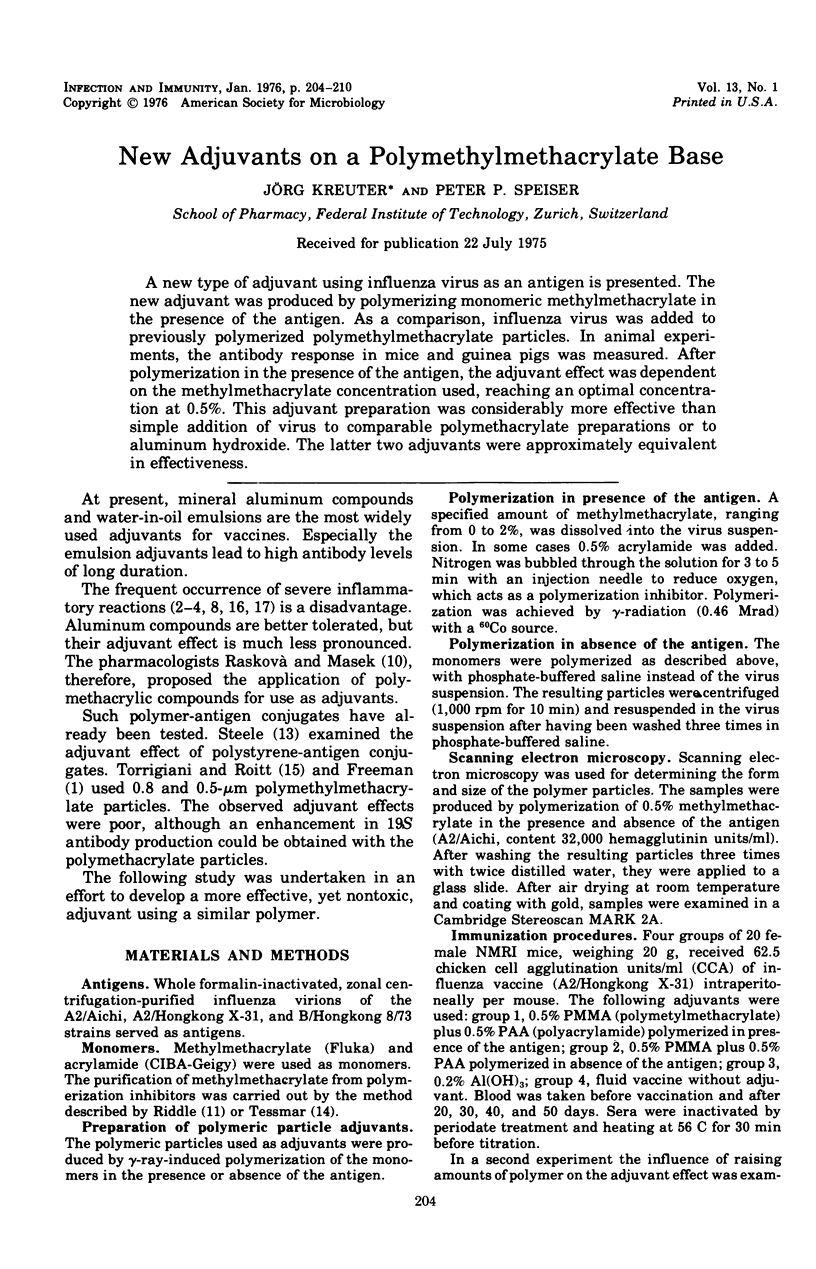

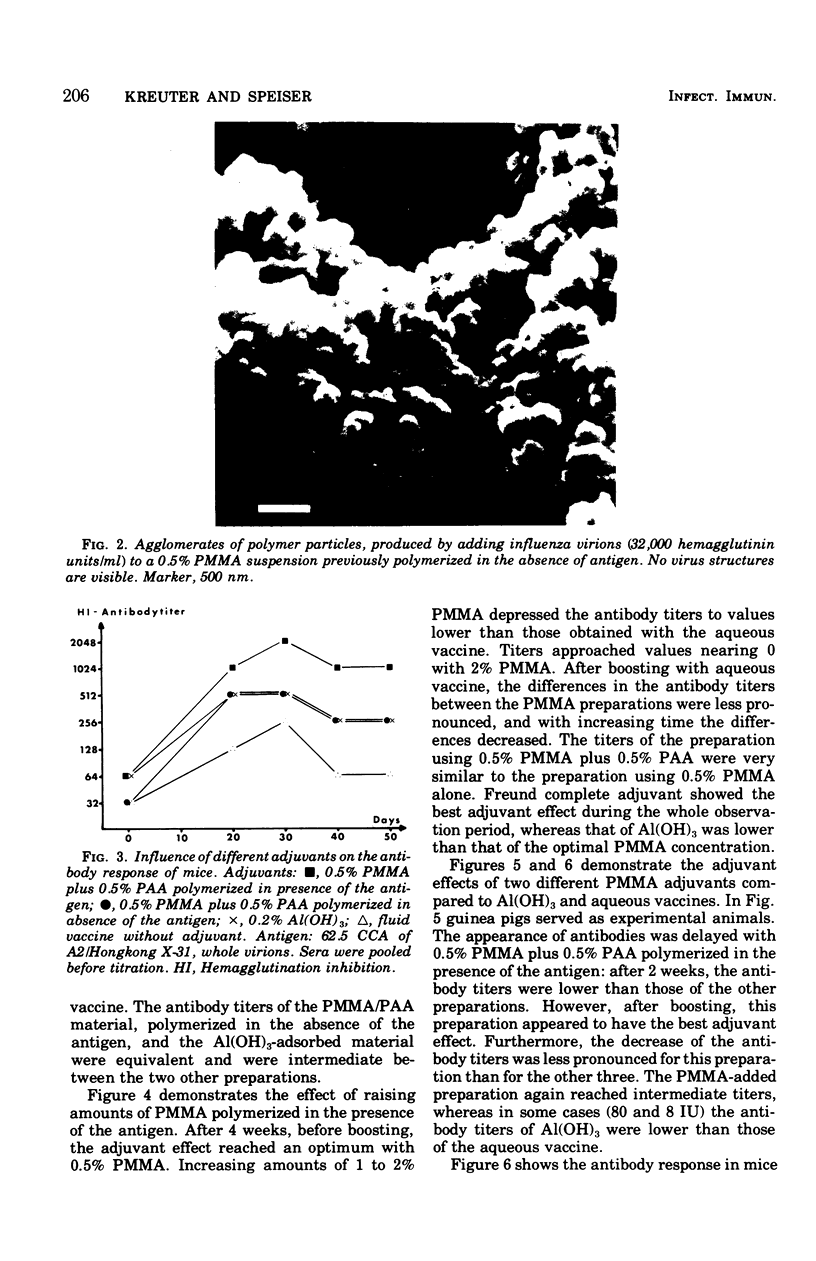

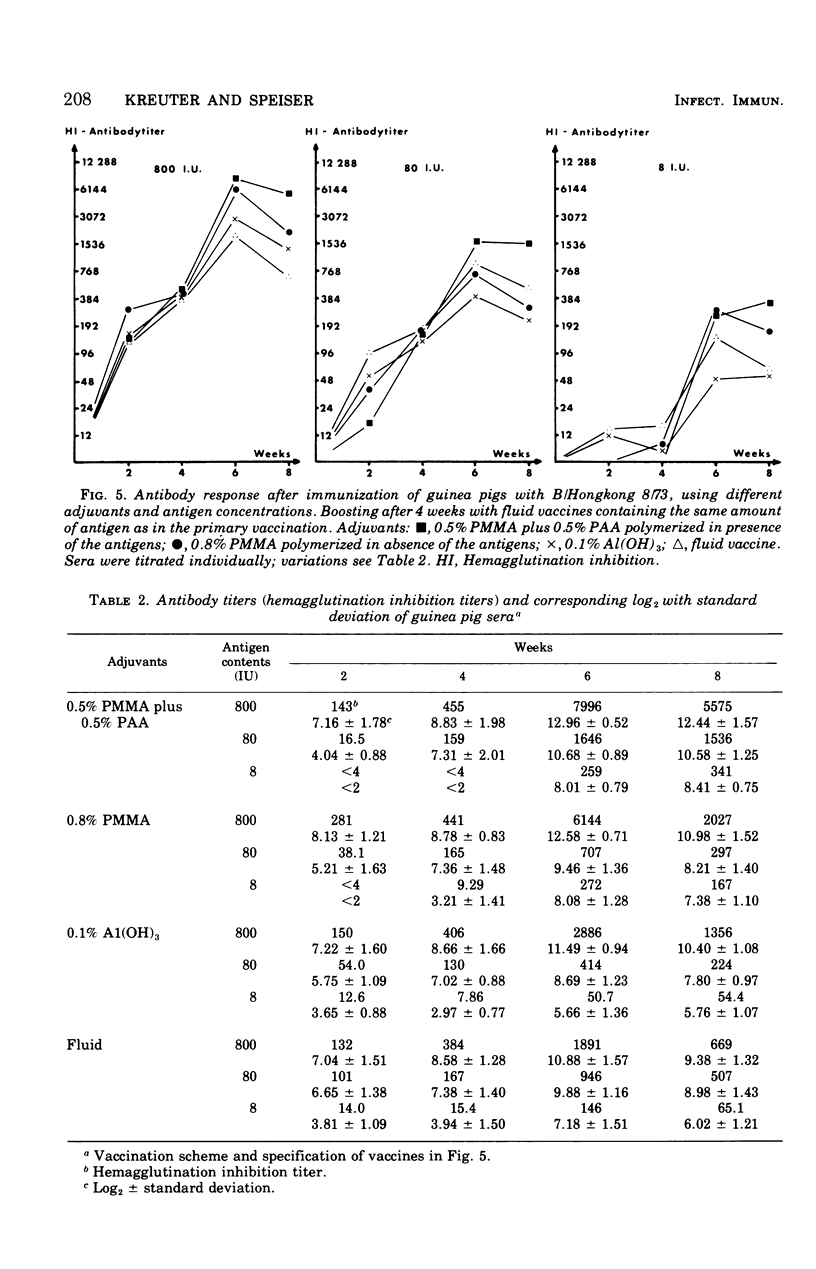
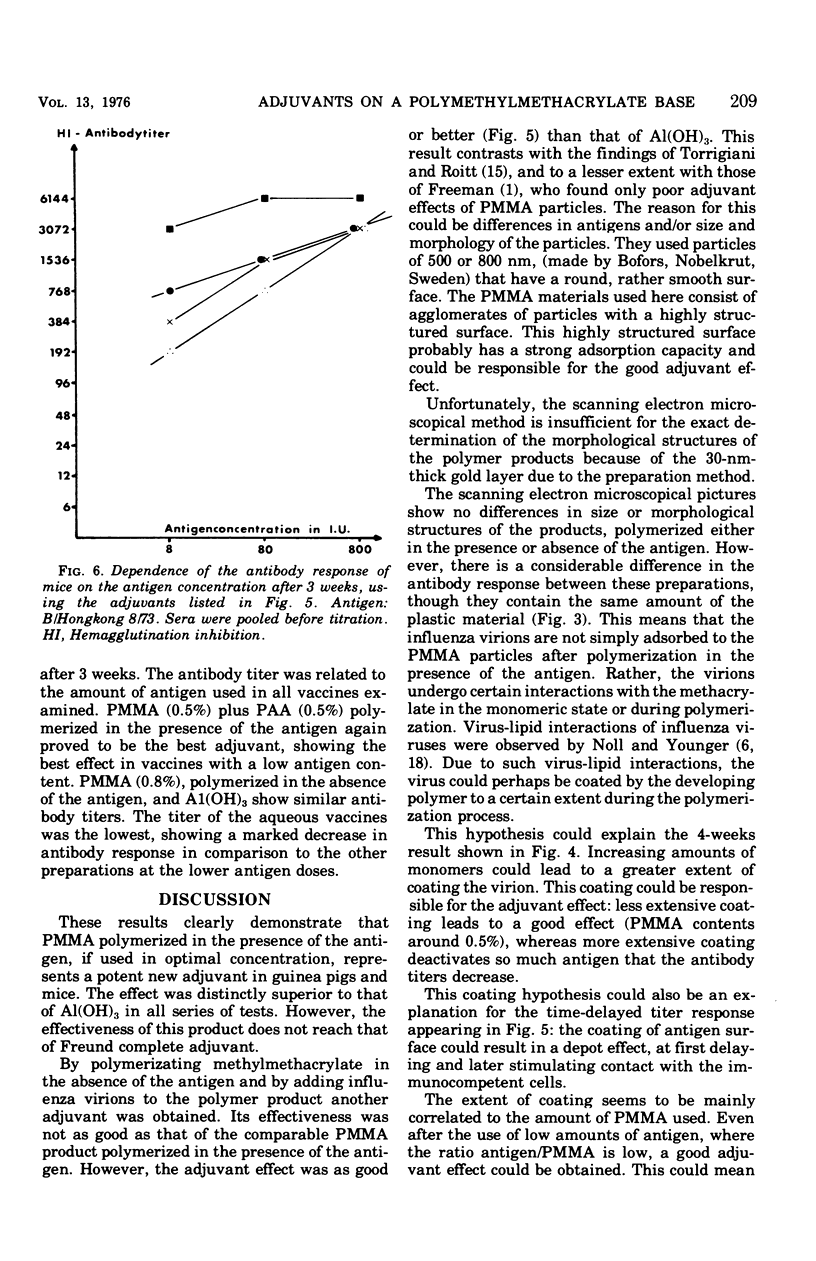
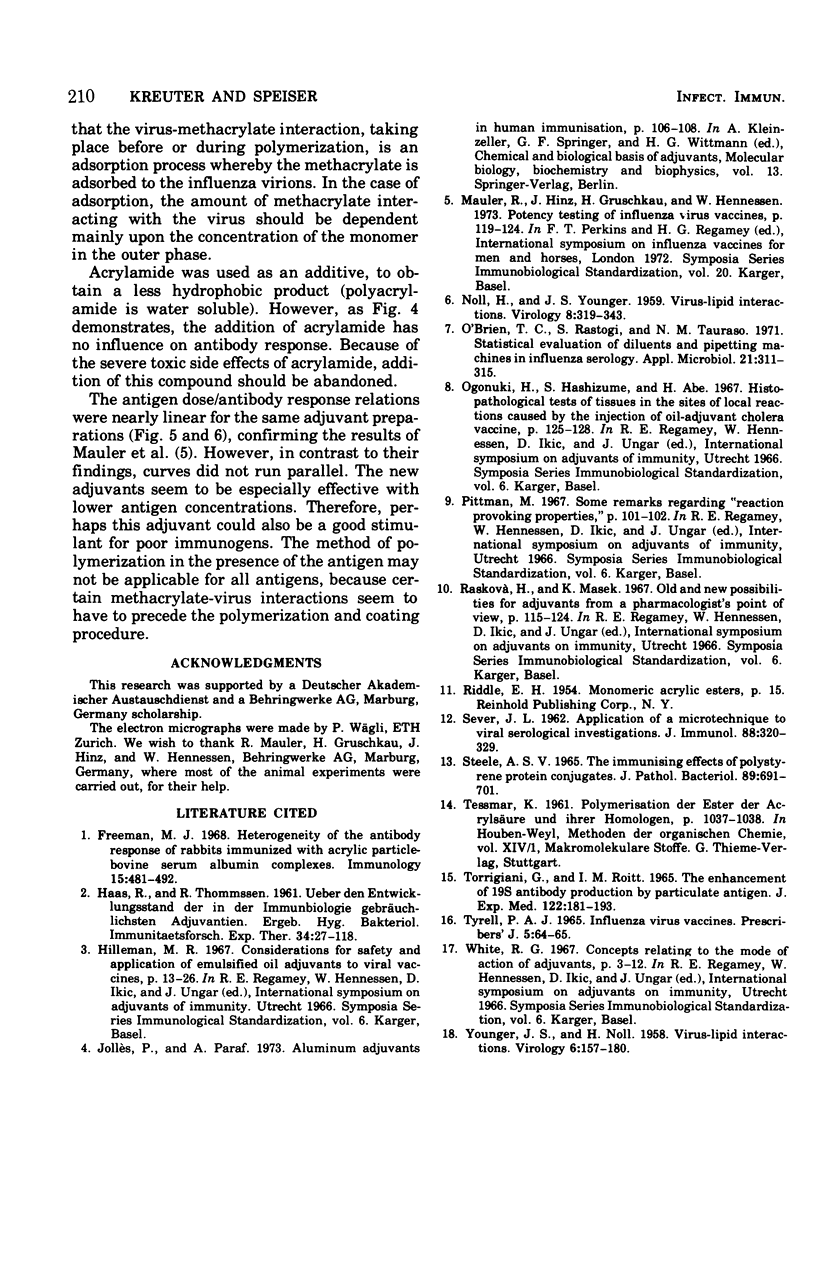
Images in this article
Selected References
These references are in PubMed. This may not be the complete list of references from this article.
- Freeman M. J. Heterogeneity of the antibody response of rabbits immunized with acrylic particle-bovine serum albumin complexes. Immunology. 1968 Oct;15(4):481–492. [PMC free article] [PubMed] [Google Scholar]
- NOLL H., YOUNGNER J. S. Virus-lipid interactions. II. The mechanism of adsorption of lipophilic viruses to water-insoluble polar lipids. Virology. 1959 Jul;8(3):319–343. doi: 10.1016/0042-6822(59)90033-9. [DOI] [PubMed] [Google Scholar]
- O'Brien T. C., Rastogi S., Tauraso N. M. Statistical evaluation of diluents and automatic diluting and pipetting machines in influenza serology. Appl Microbiol. 1971 Feb;21(2):311–315. doi: 10.1128/am.21.2.311-315.1971. [DOI] [PMC free article] [PubMed] [Google Scholar]
- SEVER J. L. Application of a microtechnique to viral serological investigations. J Immunol. 1962 Mar;88:320–329. [PubMed] [Google Scholar]
- STEELE A. S. THE IMMUNISING EFFECTS OF POLYSTYRENE-PROTEIN CONJUGATES. J Pathol Bacteriol. 1965 Apr;89:691–701. doi: 10.1002/path.1700890229. [DOI] [PubMed] [Google Scholar]
- TORRIGIANI G., ROITT I. M. THE ENHANCEMENT OF 19S ANTIBODY PRODUCTION BY PARTICULATE ANTIGEN. J Exp Med. 1965 Jul 1;122:181–193. doi: 10.1084/jem.122.1.181. [DOI] [PMC free article] [PubMed] [Google Scholar]
- YOUNGNER J. S., NOLL H. Virus-lipid interactions. I. Concentration and purification of viruses by adsorption to a cholesterol column and studies of the biological properties of lipid-adsorbed virus. Virology. 1958 Aug;6(1):157–180. doi: 10.1016/0042-6822(58)90067-9. [DOI] [PubMed] [Google Scholar]



